Image Archive
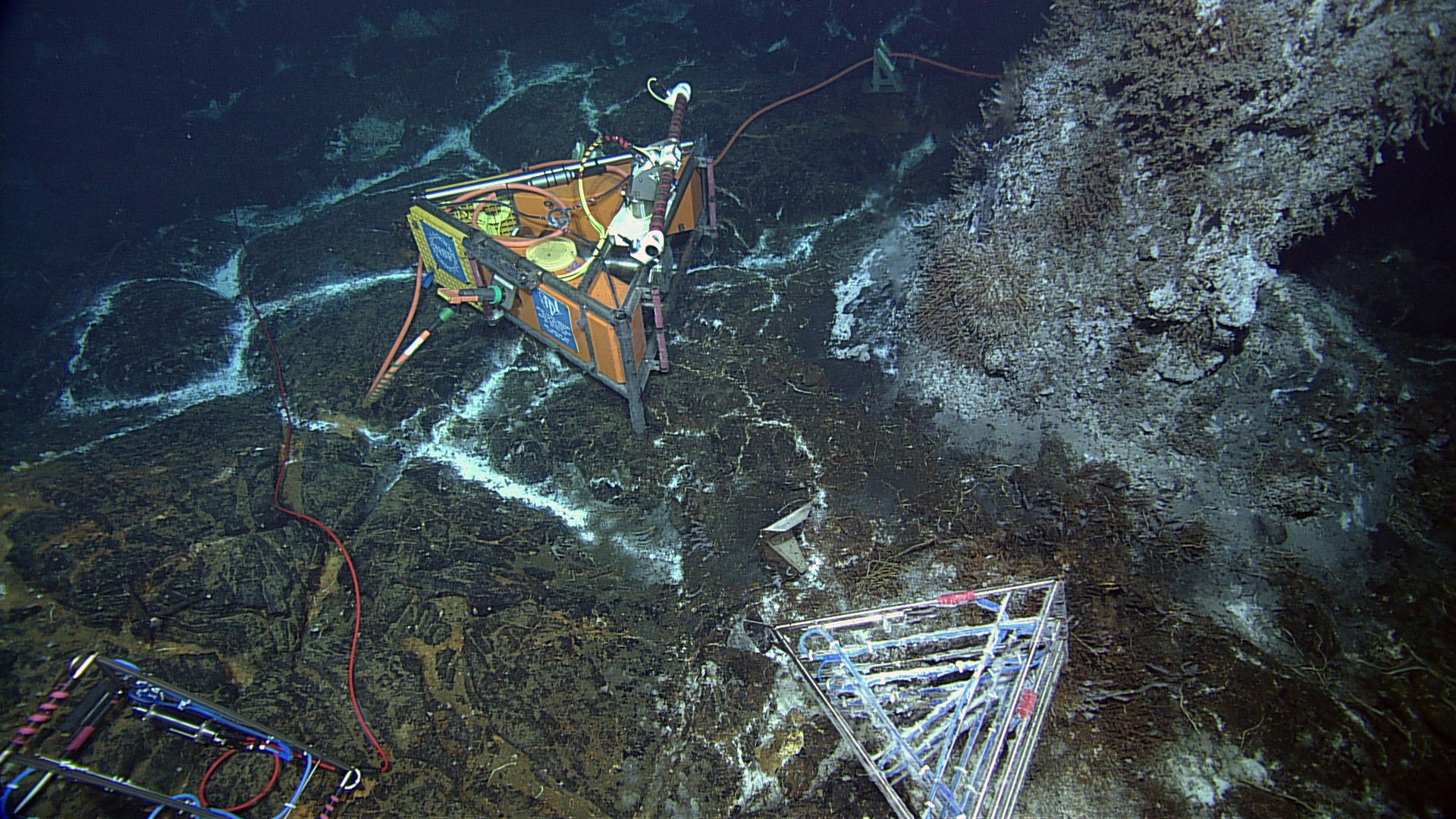


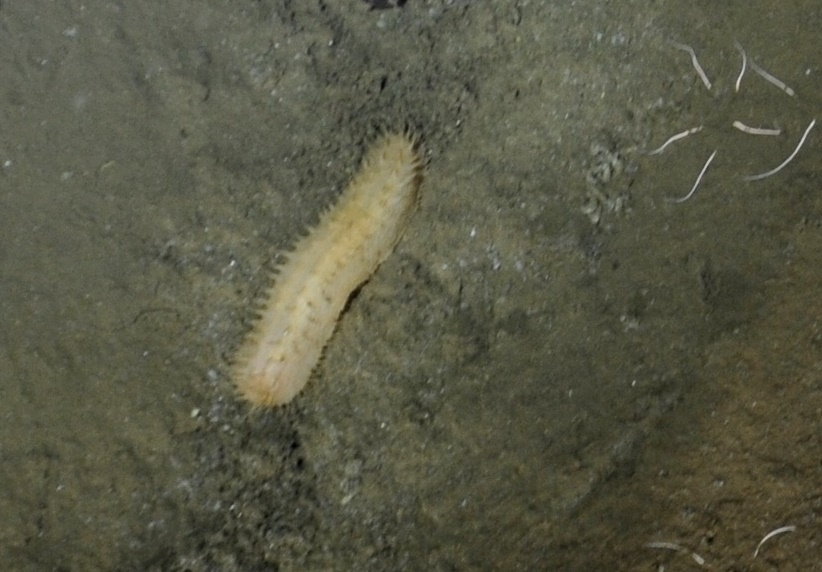






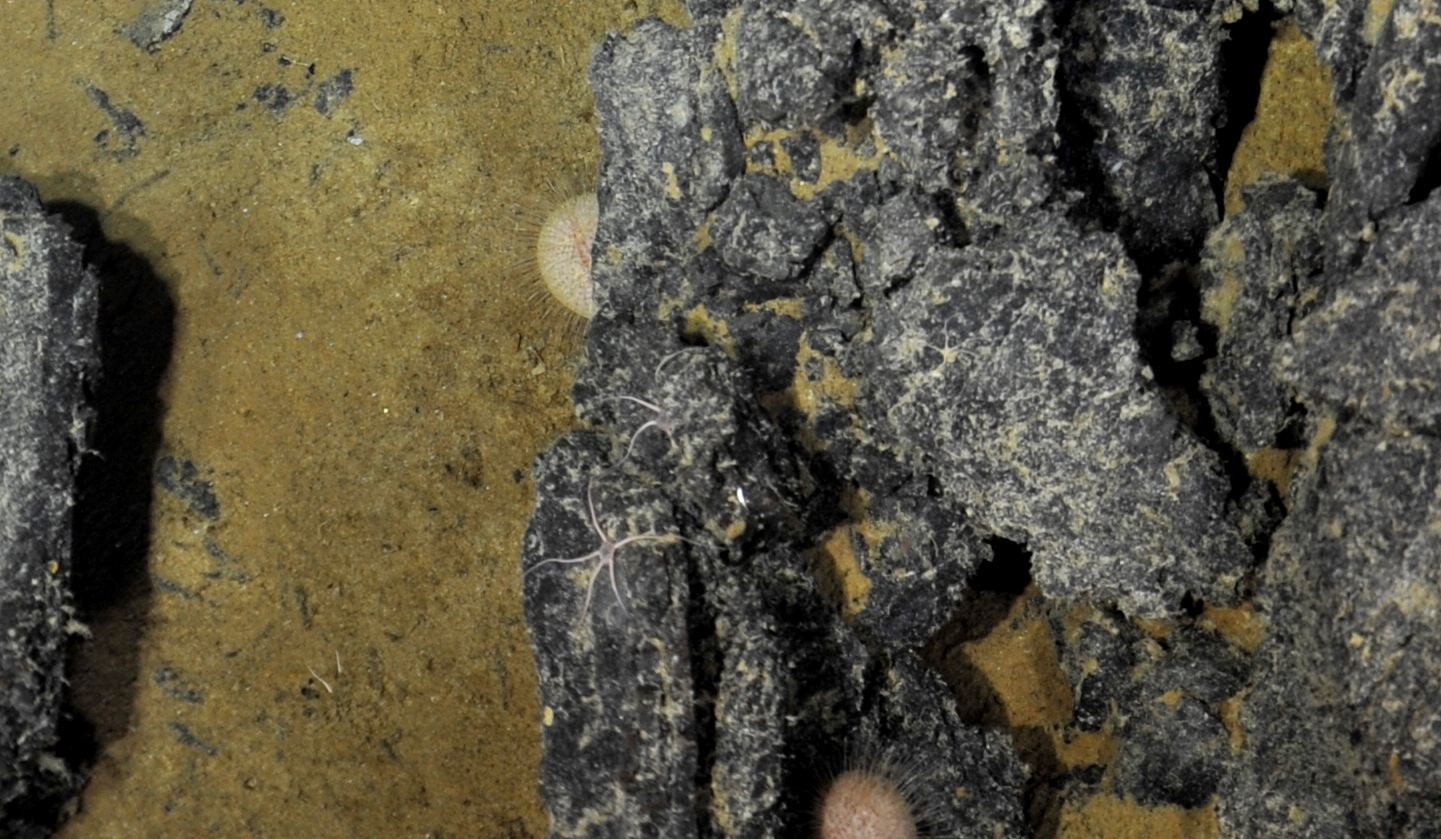


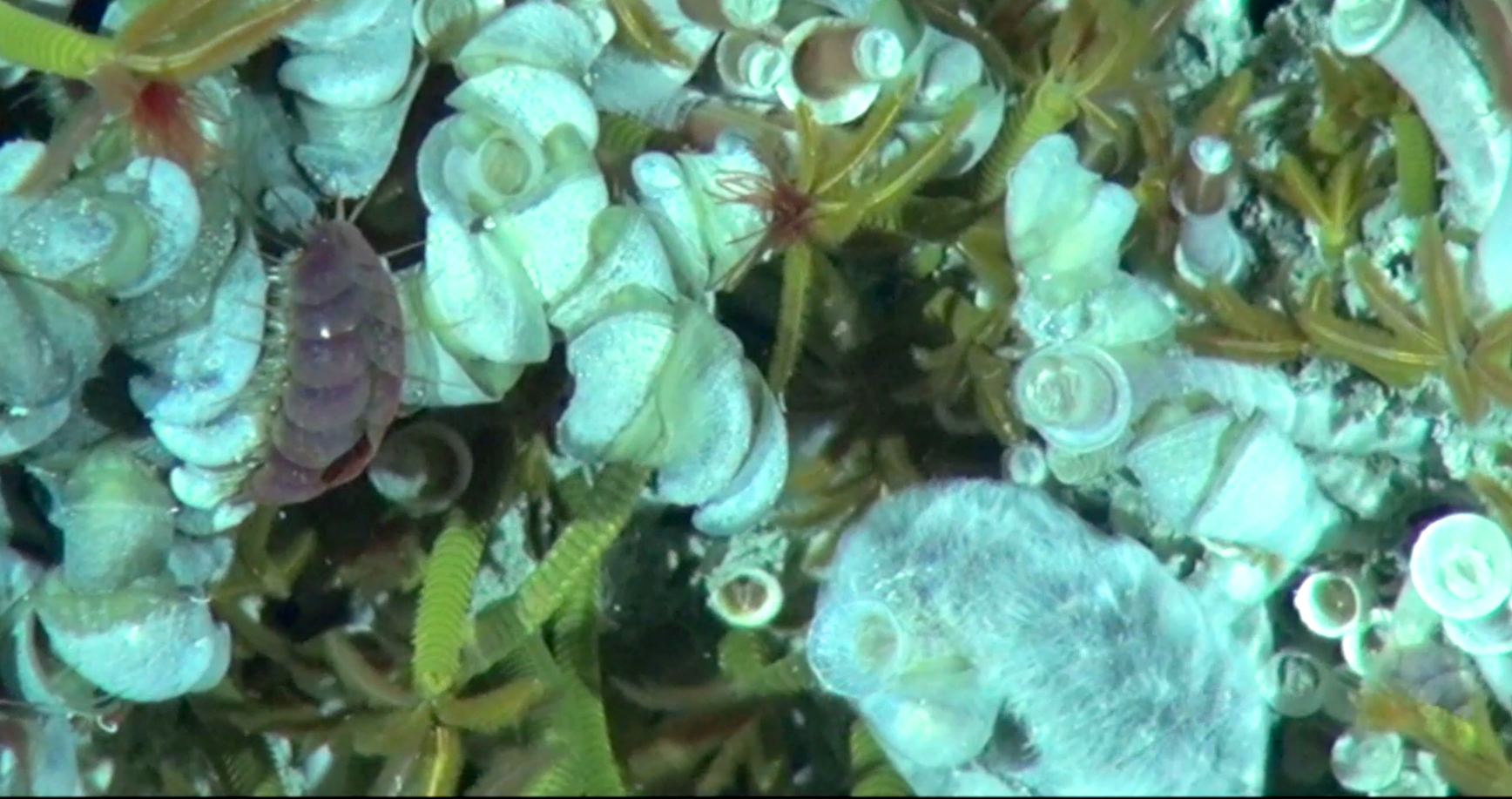











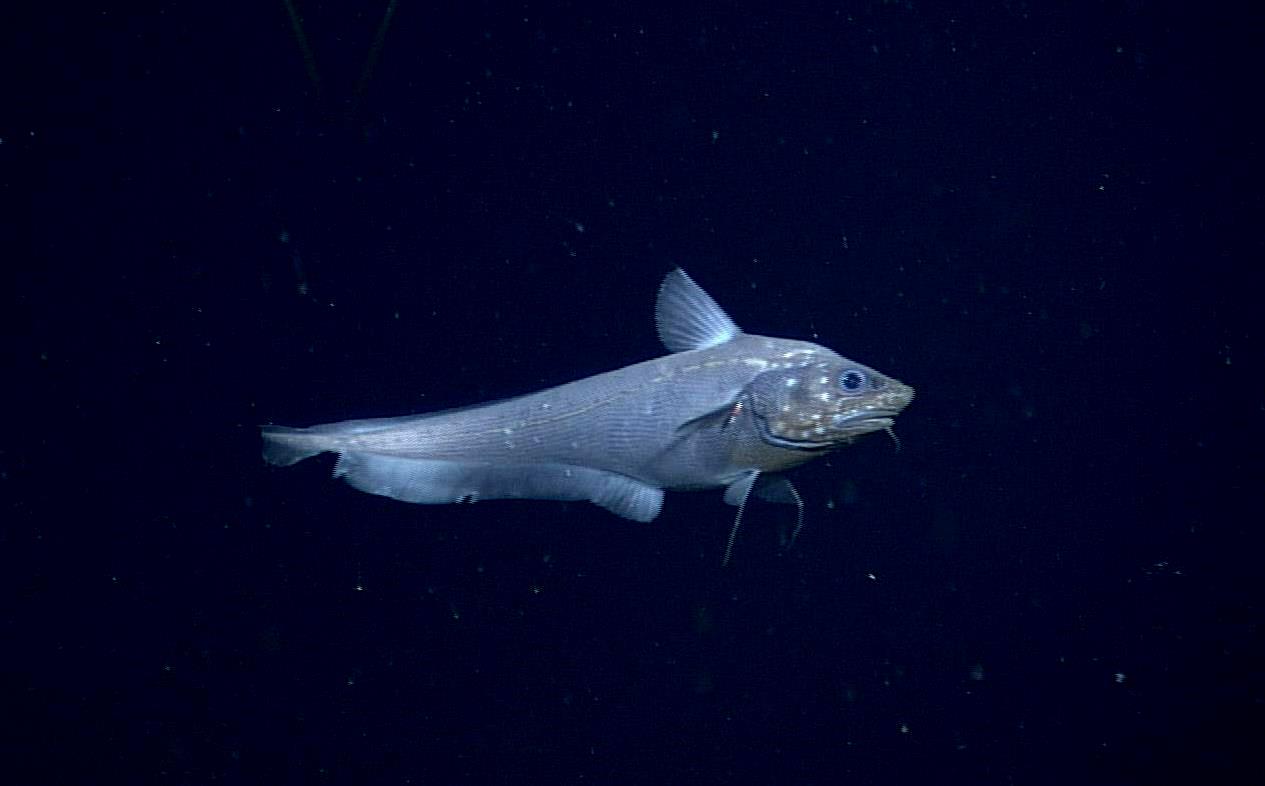


During ROPOS Dive R1730, the UW-RCA high-definition video camera was tested successfully. The camera was installed in 2013 and 1-year later it worked extremely well. A test 3-D thermistor array (bottom right) that was installed last year rests on a diffuse flow site, covered in microbial filaments. To the left, a cabled 3-D thermistor array will replace the uncabled system. Credit: UW/NSF-OOI/CSSF; Dive ROPOS R1730; V14.

This unknown species is relatively common at Axial, living among the basalt lava rocks. Photo credit: NSF-OOI/UW/CSSF; Dive R1731; V14

This giant rattail is more than 1 m in length explores the ROPOS tool basket in 2014. Credit: UW/NSF-OOI/CSSF; ROPOS Dive R1729; V14.

Unknown Sea Cucumber 2. Photo credit: NSF-OOI/UW/CSSF; Dive R1716; V14

A Big Red Jelly floats by the ROPOS camera. Photo credit: NSF-OOI/UW/CSSF; V13

Pacific Flatnose (Antimora microlepis) at Axial Seamount. Credit: UW/NSF-OOI/CSSF; ROPOS Dive R1720; V14.

This species is not yet identified, although it may also be Spinophiura jolliveti. It is the dominant brittle star at the base of Axial. Photo credit: NSF-OOI/UW/CSSF; R600; V13

A deep-sea octopus ignores ROPOS at the Escargot hydrothermal vent in the International District vent field at the summit of Axial Seamount. Credit: UW/NSF-OOI/CSSF; ROPOS Dive R1723; V14.

A rear view of the Spider Crab Macroregonic macrochira at Axial Seamount. Photo credit: NSF-OOI/UW/CSSF; Dive R1727; V14

The spider crab Macroregonic macrochira is very common at Axial Seamount. Credit:UW/NSF-OOI/CSSF; ROPOS Dive R1727; V14.

There are likely to be many sea urchins hiding beneath the vast lava rock fields at Axial.Here, several of the Unknown Sea Urchin 1 variety are shown. Photo credit: NSF-OOI/UW/CSSF; Dive R1724; V14
Seastars (Class Asteroidea) and Brittle Stars (Class Ophiuroidea) belong to Phylum Echinodermata. Photo credit: NSF-OOI/UW/CSSF; Dive R1727; V14

Brittle stars (Ophiuroids) are found everywhere on Axial. This species (center) may be different from the much more common Spinophiura jolliveti. Photo credit: NSF-OOI/UW/CSSF; Dive R1727; V14

This Deep-Sea cucumber (Holothurian) is likely of the genus Pannychia, possibly Pannychia moseleyi. Photo credit: NSF-OOI/UW/CSSF; Dive R1724; V14

Two scaleworms roam among the Palm worms and limpets at Mushroom, one of the hydrothermal vents at ASHES vent field on Axial Seamount. One worm shows its usual pinkish red color (at left), while the other is coated with a fur-like layer of filamentous bacteria. This image was taken with the RCA HD Video Camera during its test on the seafloor during VISIONS 13. Credit: UW/NSF-OOI, V14

A holothurian Deep Sea Cucumber (possibly of Genus Pannychia) at 5000 ft is surrounded by brittle stars and a sea spider (bottom right). Photo credit: NSF-OOI/UW/CSSF; Dive R1727; V14.

Sea cucumbers (Phylum Echinoderm, Class Holothuria) are common in the sediments at the base of Axial Seamount. This one is an unknown species of the genus Peniagone. Photo credit: NSF-OOI/UW/CSSF; Dive R1715; V14

This Big Red Jelly (Tiburonia granrojo) seemed to be inspecting ROPOS' camera. Photo credit: NSF-OOI/UW/CSSF; V14

A Seastar on a sheet flow at Axial Seamount. Credit: UW/NSF-OOI/CSSF; ROPOS Dive R1724; V14.

This small sea cucumber (Holothurian) belongs to the Peniagone genus. It is common at the base of Axial. Photo credit: NSF-OOI/UW/CSSF; Dive R1714; V14

This small sea cucumber (Holothurian) belongs to the Peniagone genus. It is common at the base of Axial. Its undulating motion allows it to swim from place to place. Photo credit: NSF-OOI/UW/CSSF; Dive R1599; V13

This jellyfish looks something like a lampshade. Photo credit: NSF-OOI/UW/CSSF; Dive R1723; V14

Palm Worms inhabit the toxic waters of El Guapo hydrothermal vent on Axial Seamount. Photo credit: UW/NSF-OOI/CSSF; V11.

Palm Worms at top of El Guapo. Credit: UW/NSF-OOI/CSSF; V11.

A Cockatoo Squid swam by the ROV camera. Credit: UW/NSF-OOI/CSSF; ROPOS Dive R1712; V14.

This curious Cockatoo Squid (Taonius borealis) inspected the ROV ROPOS's camera. Credit: UW/NSF-OOI/CSSF; V13.

A Rattail Fish (Coryphaenoides acrolepis) is by far the most common fish on Axial. Credit: UW/NSF-OOI/CSSF; ROPOS Dive R1601; V13.

The Deep Sea Skate (Bathyraja abyssicola) is a fairly frequent visitor to Axial Seamount; Credit: UW/NSF-OOI/CSSF; V13.
- Anemone
- Animal
- Arthropod
- ASHES
- Axial
- Axial Base
- Axial Biology
- Axial Caldera
- Bacteria
- Basalt Lava
- BEP
- Biofouling
- biolgoy
- Biology
- Camds
- Camera
- Camhd
- Central Caldera
- Ciliates
- Cnidaria
- Coastal Biology
- Crab
- Deep Profiler Mooring
- Dive Highlights
- Eastern Caldera
- Echinoderms
- Endurance Array
- Engineering Team
- ENLIGHTEN 10
- Exploratorium
- Fish
- Geology
- HD Camera
- HPIES
- Hydrate Ridge
- Hydrates
- Hydrophone
- Hydrothermal Vents
- Illustration
- Inshore 80 Meters
- Instrument
- International District
- J-BOX
- Jason
- Jellyfish
- Junction Box
- K12
- Lava
- Mollusk
- Moorings
- Nodes
- Nudibranch
- Octopus
- OOI
- Oregon Offshore
- Oregon Offshore 600 m
- Oregon Shelf
- Oregon Slope Base
- People
- PN1B
- PN1D
- Polychaetes
- PPSDN
- Primary Node
- RASFL
- ROCLS
- ROPOS
- ROPOS Dives
- ROV Team
- RV Revelle
- RV Sikuliaq
- RV Thompson
- Salp
- Sample
- SC13
- Science Team
- Sea Cucumber
- Sea Star
- Sea Urchin
- Seafloor
- Seismometer
- Sensors
- Shallow Profiler Mooring
- Shark
- Shipboard
- Shore Station
- Slope Base
- Smoker
- Soft Coral
- Southern Hydrate Ridge
- Sponge
- Squid
- Students
- Students & Guest Participants
- Tmpsf
- Tubeworms
- VISIONS 11 Leg 1
- VISIONS 11 Leg 2
- VISIONS 11 Viewers
- VISIONS 13
- VISIONS 14
- VISIONS 15
- VISIONS 16
- VISIONS 17
- VISIONS 18
- VISIONS 20
- VISIONS 22
- VISIONS 23
- Visualization
